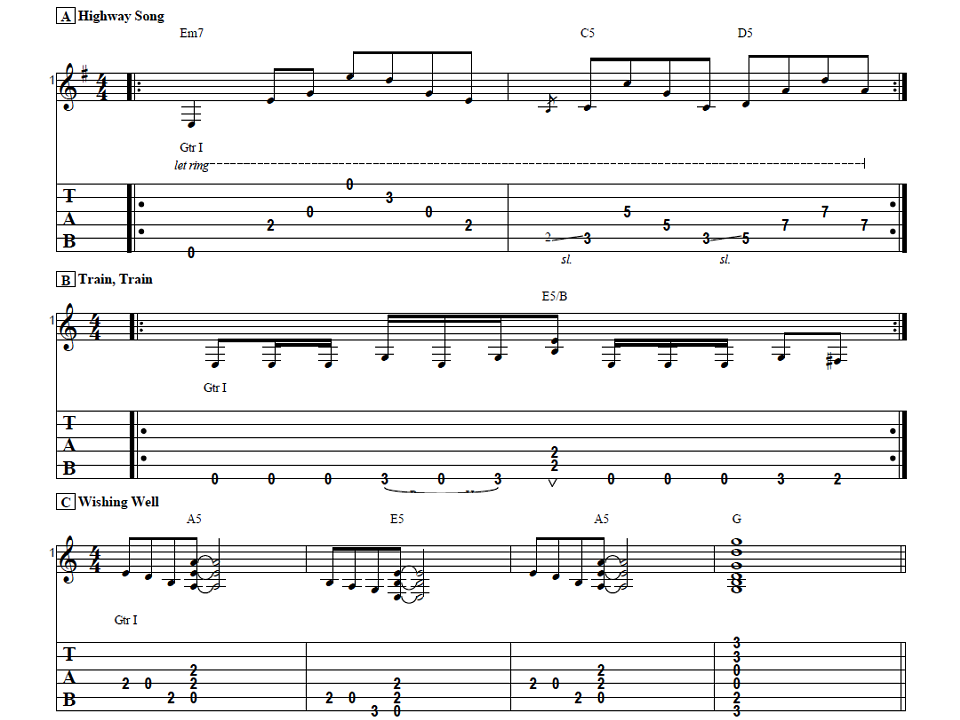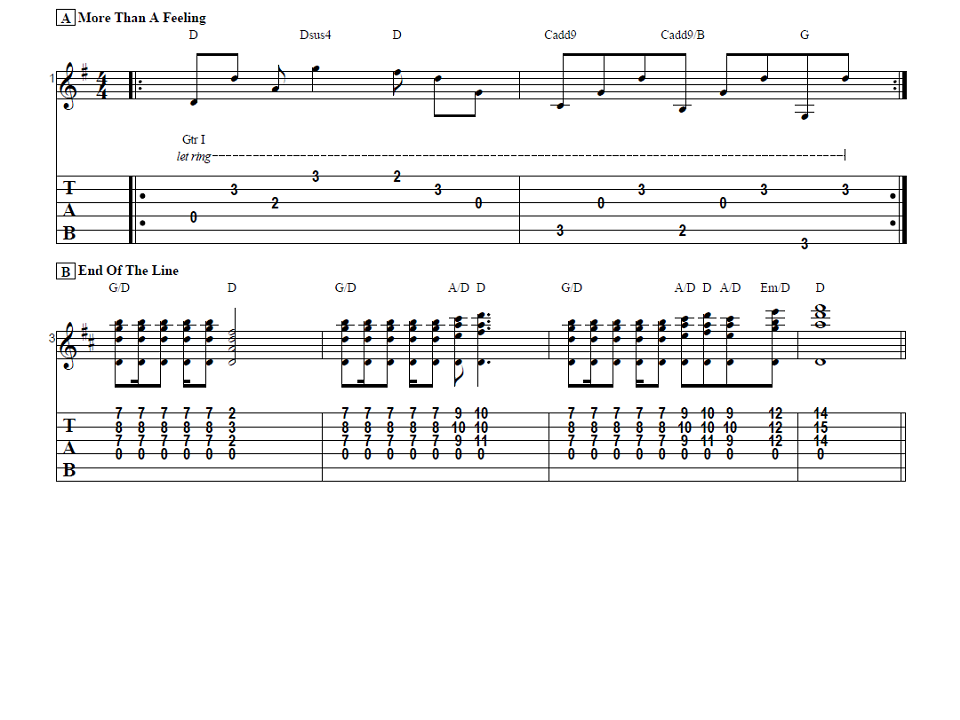Hope you enjoy this lesson…FYI, if you want something even SIMPLER, check out my other lesson
on simple riffs… CLICK HERE TO CHECK IT OUT.
Also you can check out my beginner DVDs if you CLICK HERE.
What’s up? It’s Claude Johnson. How’s it going?
I’d like to give you a lesson today on the 1-4
chord progression and I’m going to start off
real basic, but then I’m going to get more
advanced toward the end. So hopefully there’ll
be something for everyone, including you.
When we talk about the 1-4 progression, we’re
getting into a little bit of music theory.
If you take the major scale — and a lot of
theory is based off the major scale. Let’s say
we’re starting in C. We have a first one, which
is the 1, and then we count out four notes,
that’s the F, right? So 1-4 progression in the
key of C would be C to F.
You can do this in any key. For example, the key
of A. To find your 4 chord, you’d just count up
four notes on the scale. Another trick is if
you’re on the low E string, you just go up one
string on the same frets. So let’s say, B.
We just go up one string and there’s E. So
that’s an easy way to find your 1-4, and the
1-4 is an easy way to start rocking in any key.
And it might not be like a complete song, but
you’ll have a cooler riff.
I’ve got a lot of stuff to show you today, so
I’m going to assume you know these basic chords.
And if you don’t, again, check out my beginner course.
C major barre chord it and then on the 8th fret
you’ve got your F major barre chord. And the
strum rhythm I’m going to use, I’m going to do
this one today. I always talk with these percussive
rakes, which I throw-in with my rhythm playing.
By themselves they just sound like noise, but when
you throw them in it can sound cool.
So once you’ve got the 1-4 thing down you can start
adding some other chords. For example, I guess the
flat 3, which is a full step down from your 4. So
you have your 4 chord on the 8th fret. Let’s move
down here to the 6th fret. It’s an E flat barre
chord. You can do this. That’s one way to spice it up.
Another way, you can go up the other way. So you
can mix all that up and write your own riffs.
Play around in different keys and you’ll come up
with some cool stuff.
Another thing you can do is you can try to throw in
some licks. What I’m doing there is I’m hitting a
double stop, both notes on the D and G strings, on
the 10th fret, then I’m sliding up on the G string
to the 12th fret and back, 8th fret, 12th fret, 8th
fret and then down to the 10th fret, D string. So
real slow, that lick is like this. And on this note,
I’m doing a slight tug, a little quarter-note bend
there and vibrato on the last note.
So that last set of licks is pretty much C pentatonic,
ending up there on the C. So feel free to use the C
pentatonic scale. It’s a great choice when you’re
doing this kind of riff. Even just like 1-4. Feel
free to create your own licks and go nuts.
Here’s another thing you can do. So what I did there,
I’m basically playing a C arpeggio, it’s like a sweep
arpeggio going right up, and then hammering-on. So let
me show you this. Pinkie on the 8th fret of the low E,
ring finger on the 7th fret of the A string and then
first finger on the 5th fret of the D string. Actually,
I’m going to hit all three of these strings: D, G, B. As
I’m sweeping this I’m lifting-off — I’m actually doing
two things. I’m muting with my palm on the right hand so
I don’t — we don’t want it to sound like this, like a
chord. So I’m muting and then I’m also lifting-off with
this hand as I go up. So again. Then, when I get to the
B string, I’m going to hammer on the 8th fret, pull-off
and then I’m going to hit the 8th fret on the G string.
So it kind of makes it a mixolyidian or dominant 7 arpeggio.
Then, you can follow that up with all kinds of things.
Or this one. You can create all kinds of cool ideas.
What I just did there was instead of going, hammering
up to here, I just hammered one fret. And then, instead
of hitting the 7th down here, I hit it up here. And then
I was just doing a scale thing.
So anyway, I hope you got something out of this lesson.
Just play around with 1-4s. It’s just like such a solid
foundation for rock riffs. Try mixing different chords,
different licks, either pentatonic licks or if you’re
ready for the advanced stuff, try creating some arpeggio
licks as well.
So that’s all I’ve got for you today. God bless and have
an awesome weekend, awesome week. I’ll catch you on the flip side.


